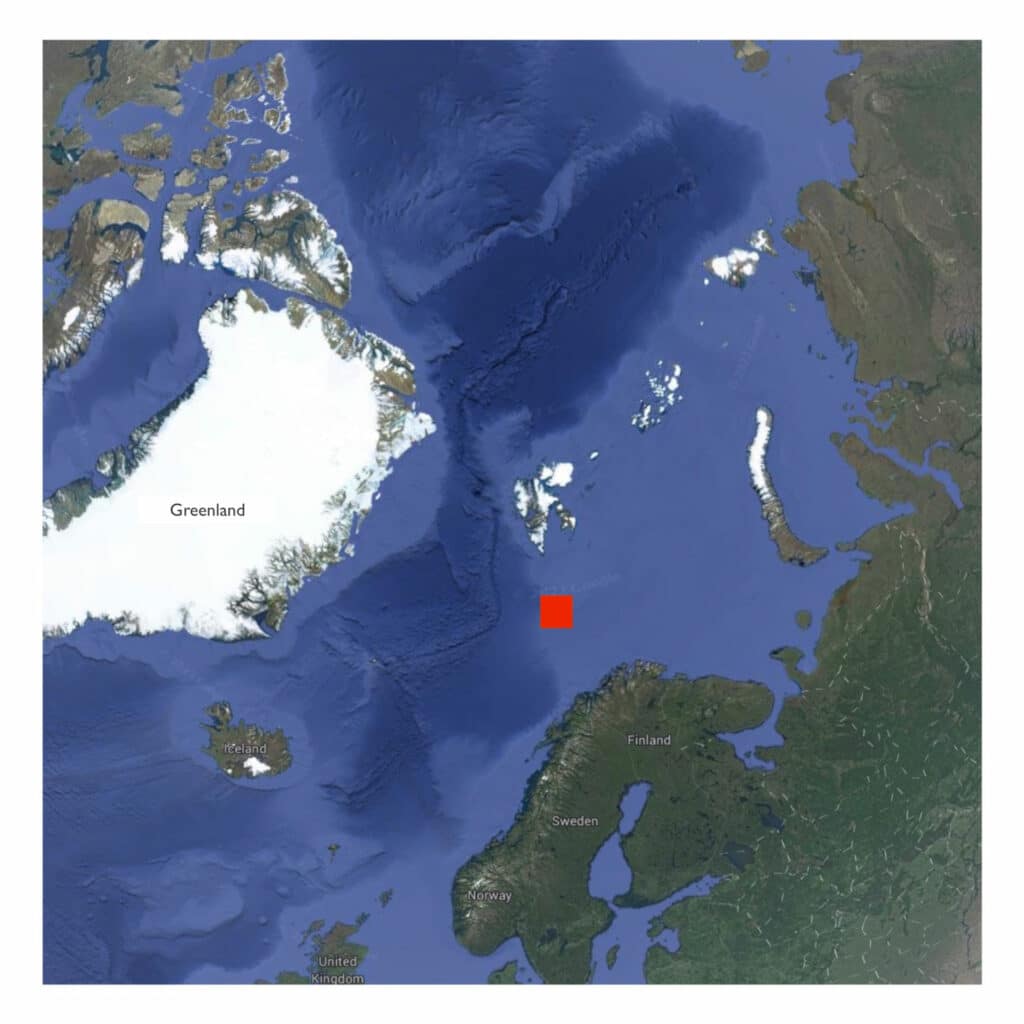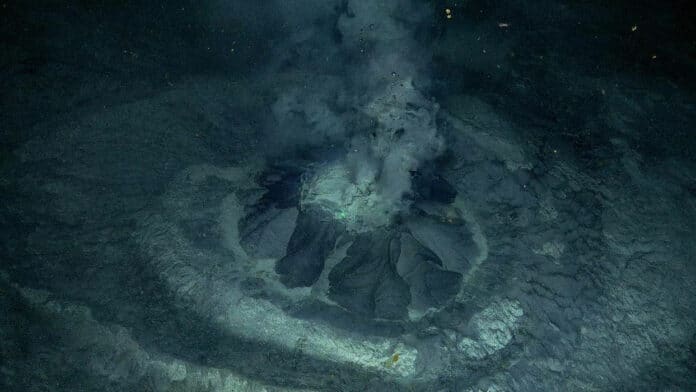A discovery could shed light on the impact of localized but persistent in-time phenomena on the global methane budget and its effects on the ecosystems. In collaboration with REV Ocean, scientists from UiT, The Arctic University of Norway, have found a unique new volcano onboard the research vessel Kronprins Haakon.
This newly discovered volcano is the second-ever mud volcano found within Norwegian waters. The volcano has been named The Borealis Mud Volcano. It is located approximately 70 nautical miles south of Bear Island and at 400m depth in the Barents Sea. It erupts mud, fluids, and gas from the planet’s interior.
The volcano is approximately 300m wide and 25m deep. It is most likely the result of a catastrophic, natural blowout that abruptly released massive methane just after the last glaciation period, 18,000 years ago.

Currently, the Borealis Mud Volcano, which is 7 meters in diameter and 2.5 meters high, continuously emits methane-rich fluids. Scientists made this discovery using the piloted submersible vehicle ROV Aurora in the Southwestern Barents Sea at the outer part of Bjørnøyrenna (Outer Bear Island Trough).
Professor Giuliana Panieri, expedition leader and Principal Investigator of the AKMA project, said, “We do not exclude the possibility of discovering other mud volcanoes in the Barents Sea. It is only thanks to collaborative team teamwork and advanced technology that these results can be achieved.”
Professor Stefan Buenz, expedition co-leader, said: “Exploring the ocean floor and discovering new methane seeps is like finding hidden treasures. It’s full of surprises. We have found thousands of seeps. Yet, every time we go down to the ocean floor, we feel that we are just beginning to understand the vastness and incredible diversity of seep systems.”
Science Director of Ocean Census and REV Ocean Alex Rogers, an expedition participant, said: “During this expedition, we have discovered that these blowout craters are unique refuges from human impacts like trawling for fragile marine animals such as corals and sponges.”
Beckett Colson, WHOI postdoctoral investigator, said, “It has been an honor to be part of this international team of students and scientists. I joined the expedition to operate a new real-time methane instrument, but it has been incredible to explore these beautiful habitats.”
